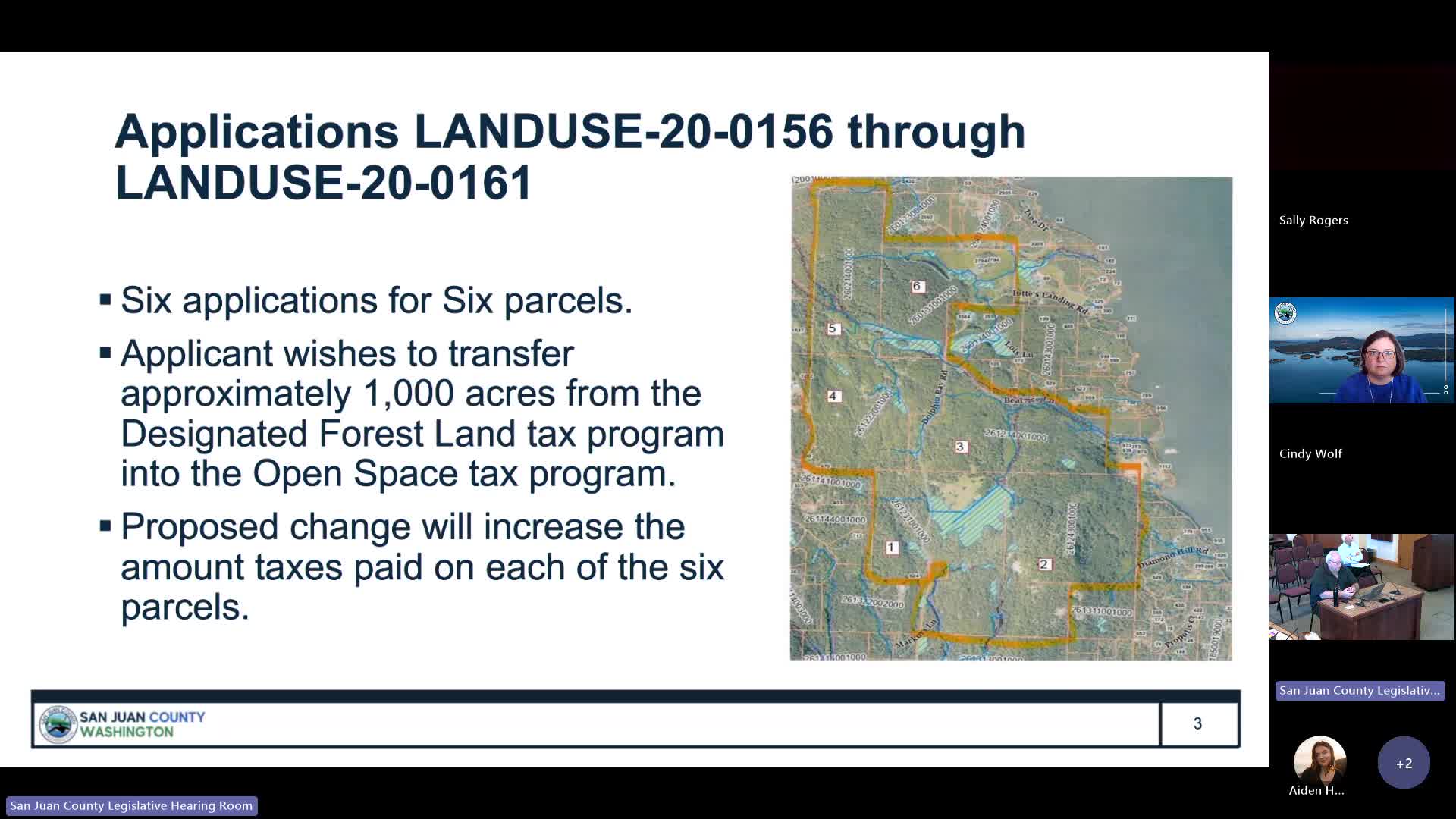Tax Shift Proposal Sparks Debate Over Land Use Changes
July 08, 2024 | San Juan County, Washington

This article was created by AI summarizing key points discussed. AI makes mistakes, so for full details and context, please refer to the video of the full meeting. Please report any errors so we can fix them. Report an error »

In a recent government meeting, discussions centered around a proposal to shift six parcels of land, totaling approximately 1,000 acres, from the designated forest land tax program to the open space tax program. This change, initiated by the landowner, is expected to increase the tax burden on these properties, which currently benefit from a 90% reduction in taxes under the forest land program.
The open space tax program, established in 1970, aims to preserve and maintain adequate open space for the enjoyment of natural and scenic resources. Under this program, properties are valued based on their current use rather than their highest potential value, which typically results in lower tax assessments. The maximum tax reduction allowed in the open space program is 70%, with property owners receiving a 1% reduction for each public benefit rating point assigned to their land.
During the meeting, council members raised questions about the scoring system used to evaluate the parcels. Concerns were expressed regarding the legality of fractional scoring, as the evaluation form indicated that scores should be whole numbers. Council members also sought clarification on specific scoring discrepancies noted in the documentation.
The next steps in the process include establishing a timeline for further evaluations and finalizing necessary documents. A public hearing is anticipated to take place on August 6, where community members will have the opportunity to voice their opinions on the proposed land designation changes. The outcome of this proposal could significantly impact the financial responsibilities of the landowner while also influencing the preservation of local natural resources.
The open space tax program, established in 1970, aims to preserve and maintain adequate open space for the enjoyment of natural and scenic resources. Under this program, properties are valued based on their current use rather than their highest potential value, which typically results in lower tax assessments. The maximum tax reduction allowed in the open space program is 70%, with property owners receiving a 1% reduction for each public benefit rating point assigned to their land.
During the meeting, council members raised questions about the scoring system used to evaluate the parcels. Concerns were expressed regarding the legality of fractional scoring, as the evaluation form indicated that scores should be whole numbers. Council members also sought clarification on specific scoring discrepancies noted in the documentation.
The next steps in the process include establishing a timeline for further evaluations and finalizing necessary documents. A public hearing is anticipated to take place on August 6, where community members will have the opportunity to voice their opinions on the proposed land designation changes. The outcome of this proposal could significantly impact the financial responsibilities of the landowner while also influencing the preservation of local natural resources.
View full meeting
This article is based on a recent meeting—watch the full video and explore the complete transcript for deeper insights into the discussion.
View full meeting
